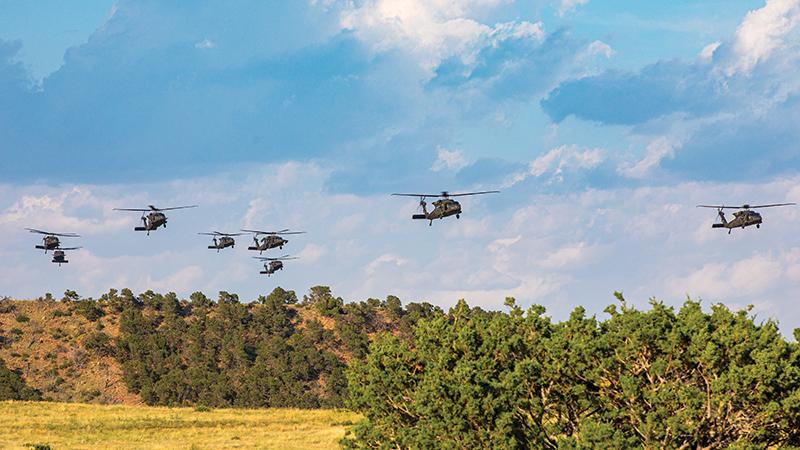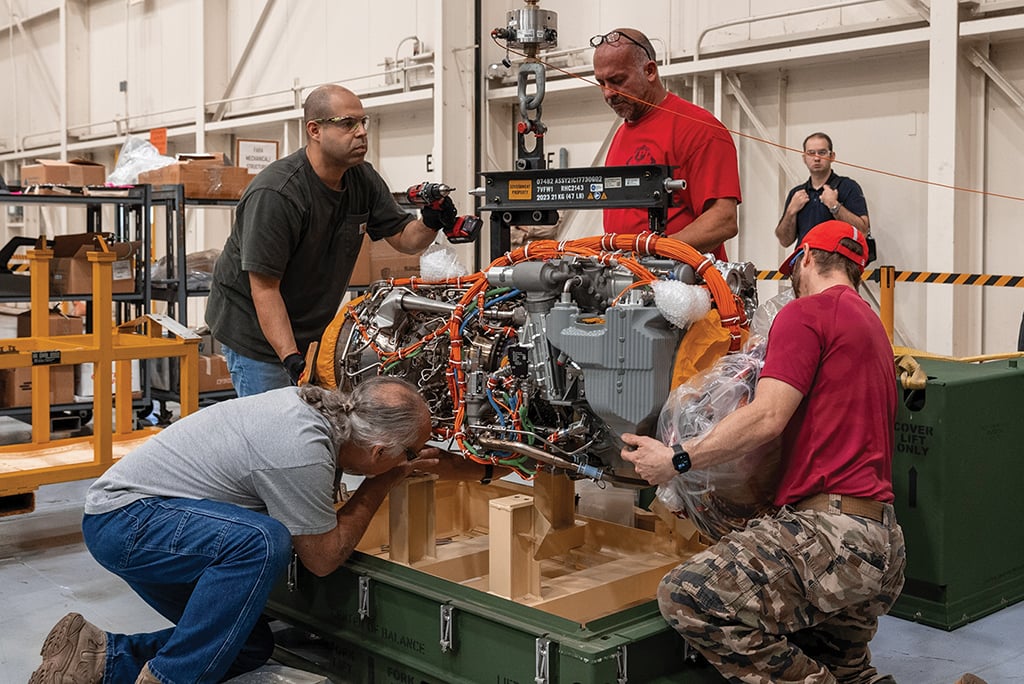This article is published in Aviation Week & Space Technology and is free to read until Nov 15, 2024. If you want to read more articles from this publication, please click the link to subscribe.

Engine replacements, life support upgrades and new weapons integration are planned to keep the U.S. Army’s Black Hawk fleet relevant for decades to come.
The U.S. Army’s UH-60 Black Hawk fleet is showing all the signs that come with aging, needing lots of work to offset the reality of being 50 years old. But unlike its human operators at that age, the utility helicopter is likely to emerge smarter and more powerful and independent as it exits middle age.
The most ubiquitous military helicopter in service is undergoing an overhaul in the next decade intended to give the UH-60M, the current version in production, a more powerful engine, fly-by-wire capability and a new avionics architecture as well as enhanced self-protection equipment to deal with threats on the modern battlefield. The Army expects to keep the UH-60 in service until around 2070, even though it canceled the UH-60V upgrade—which included a digital cockpit—this year.
- U.S. Special Operations forces plan Black Hawk upgrades
- A multiyear contract from the U.S. Army and foreign deals add to the UH-60M backlog
Near-term plans include structural enhancements, an upgrade to a 60-kVA generator to deliver one-third more power and a degraded visual environment sensor, according to the Army. The service also continues to work with the Defense Advanced Research Projects Agency (DARPA) to advance technologies that could lead to an optionally piloted Black Hawk.
A centerpiece of the Black Hawk modernization is dealing with legacy avionics issues through the Modular Open Systems Approach, a Pentagonwide effort to make it faster and cheaper to upgrade platforms as new electronic subsystems become available. The Army has embarked on a three-phase program that is scheduled to last beyond the decade to update the helicopter fully. The service aims to address obsolescence issues in the next few years.
Related content:
Lockheed Martin Black Hawk Data Snapshot
Spinoffs and Specialities of Sikorsky's Black Hawk
The digital enhancements also are designed to enable the Army to deploy from the Black Hawk what it calls “launched effects” uncrewed systems or weapons. The Army first launched an Altius 700 uncrewed system from a Black Hawk in late 2023.
In addition to enhancing the system’s lethality, the service also plans to bolster its survivability. The Army recently tested a new laser for the Common Infrared Countermeasures self-protection system used by the Black Hawk as well as the Boeing AH-64 Apache and CH-47 Chinook fleets. The Jupiter Laser, due for fielding in 2026, is designed to defeat advanced threats. The Army demonstrated the laser’s ability to defeat a missile in a test this year at the White Sands Missile Range in New Mexico involving the countermeasures system installed on a suspended aircraft.
A key component to extending the life of the Black Hawk is an engine upgrade. The service has decided to use the GE Aerospace T901-GE-900 engines initially destined for the now canceled Future Attack Reconnaissance Aircraft program to upgrade the UH-60 and AH-64 Apache. GE delivered two of those engines in June to the Army to validate the turboshaft for use on the UH-60M.
The engines are intended to be used for ground test runs on a Black Hawk leading to flight trials within about a year. The powerplant, due to replace the GE T700, was developed under the Improved Turbine Engine Program and should deliver a 1,000-shp increase in performance.
The platform remains central to the Army’s effort to determine if it can pilot future rotorcraft optionally. The Black Hawk-related work emerged from Sikorsky’s Matrix autonomy management system that was tested on several aircraft, including the S-76 Sikorsky Autonomy Research Aircraft and UH-60 Black Hawk Optionally Piloted Vehicle. The company flew an uncrewed Black Hawk under DARPA’s Aircraft Labor In-Cockpit Automation Systems more than two years ago.
That work also is laying the foundation for optionally piloted operations using the Future Long-Range Assault Aircraft that is built around the Bell V-280 Valor second-generation tiltrotor and eventually due to replace the Black Hawk.

The Army’s new aviation plan also canceled the Future Attack Reconnaissance Aircraft, which would have taken the role of U.S. Special Operations Command’s MH-60 Direct Air Penetrator (DAP). This means the Army’s 160th Special Operations Regiment will keep flying the DAP—a heavily armed version of the Black Hawk—longer than planned. Some expected DAP upgrades include a new inlet barrier filter, installation of the RTX Silent Knight terrain-following radar, a new nose door, improved sensors and communications upgrades, and modernized armor. The 160th’s Black Hawks are the only variants of the type with the GE YT706 engine, and Special Operations Command is looking for ways to improve its reliability and efficiency.
As part of the Army’s overhauled aviation plans, the service is planning another multiyear buy of Black Hawks. It could cover as many as 255 helicopters starting in 2027, according to a July announcement. That order would add to a lengthy backlog for Sikorsky, which includes new UH-60Ms for Australia and MH-60R orders from Norway and Spain, along with additional HH-60Ws for the U.S. Air Force and potentially new MH-60Ts for the U.S. Coast Guard.
The Black Hawk also remains popular abroad, despite its age. This year, Sweden said it would buy a dozen UH-60M Black Hawks, adding to the 15 already in service, as the country looks to phase out the European NHIndustries NH90 tactical transport. Greek lawmakers also this year approved the purchase of 35 Black Hawks, and Austria signed a contract for a dozen of the rotorcraft over the summer.





